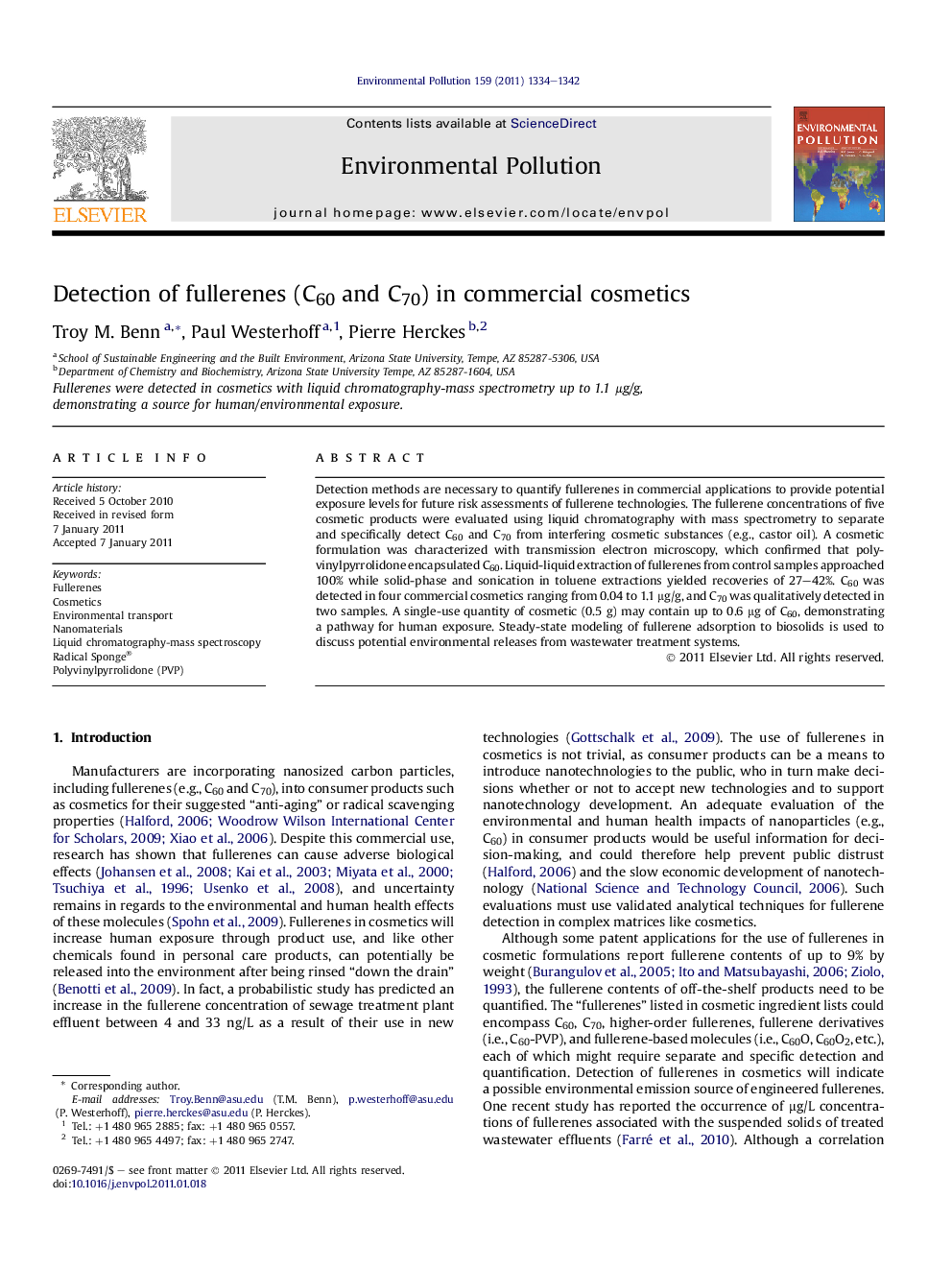| Article ID | Journal | Published Year | Pages | File Type |
|---|---|---|---|---|
| 4425466 | Environmental Pollution | 2011 | 9 Pages |
Detection methods are necessary to quantify fullerenes in commercial applications to provide potential exposure levels for future risk assessments of fullerene technologies. The fullerene concentrations of five cosmetic products were evaluated using liquid chromatography with mass spectrometry to separate and specifically detect C60 and C70 from interfering cosmetic substances (e.g., castor oil). A cosmetic formulation was characterized with transmission electron microscopy, which confirmed that polyvinylpyrrolidone encapsulated C60. Liquid-liquid extraction of fullerenes from control samples approached 100% while solid-phase and sonication in toluene extractions yielded recoveries of 27–42%. C60 was detected in four commercial cosmetics ranging from 0.04 to 1.1 μg/g, and C70 was qualitatively detected in two samples. A single-use quantity of cosmetic (0.5 g) may contain up to 0.6 μg of C60, demonstrating a pathway for human exposure. Steady-state modeling of fullerene adsorption to biosolids is used to discuss potential environmental releases from wastewater treatment systems.
► Fullerenes were detected in cosmetics up to 1.1 μg/g. ► Liquid-liquid extraction efficiently recovers fullerenes in cosmetic matrices. ► Solid-phase extraction reduces LC-MS detection interferences for C60. ► Cosmetics can increase human and environmental fullerene exposures.
